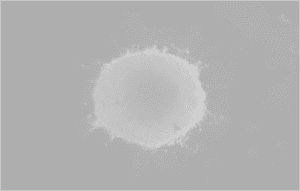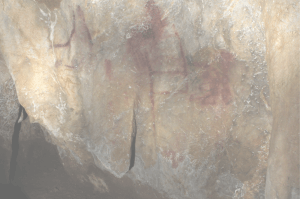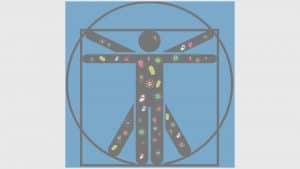Archaeology often conjures up images of exciting discoveries at a site in an exotic country. Possibly the first picture that comes into our mind will be that of Egypt. However, the science includes the study of the past from different perspectives and through the use of a wide range of analytical techniques. An archaeological excavation is undoubtedly one of the most thrilling and attractive experiences, but it is always followed by hard work in the laboratory. One of the latest and most innovative applications in archaeology is the study of biomolecules; from Neanderthal DNA to the lipids on archaeological pottery. We all may have seen news about Neanderthal DNA and their relation with our species, but, what do you known about lipids? What do they have to do with archaeology?
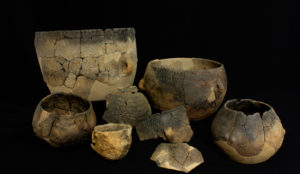
Archaeological pottery recorded in Verson, France. (Photo: Annabelle Cocollos, Germain-Vallee, 2015)
Lipids, like such other biomolecules as DNA, protein and carbohydrates, are preserved over time on the different kinds of remains found at archaeological sites. They form a very varied type of biomolecule, but they all share the same characteristic: they are insoluble in water. Lipids include animal fats, hormones and essential vitamins for the organism, and also vegetable oils, like olive oil, and wax. Whereas DNA and proteins are normally sampled from human and animal bones found at sites, lipids are very peculiar as they are preserved not only on organic matter but also on such objects as pottery. Now we may ask, why is that important? The fact is that pottery has not existed throughout the whole history of humankind, but appeared at different times and in different places during prehistory. Until now, we have studied the time when pottery appeared in different parts of the world, the shape and decoration of the recipients and even the techniques with which they were made. But now, the study of lipids we carry out in our research group is also allowing us to analyse why pottery was made, that is to say, the purpose of the first pots and the products they held.
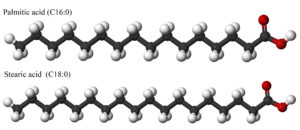
The most common fatty acids identified in archaeological pottery: palmitic and stearic. (Source: Wikimedia Commons)
How are lipids preserved on archaeological pottery? When the recipients are made, a series of pores are formed in their microstructure that are usually only visible under the microscope. However, these pores become the perfect place to preserve the lipids from the food that was cooked in the pots (animal fats, oil, and so on). The lipids can then be extracted from the pores in the recipients and analysed. In that way, we can discover what foodstuffs were cooked in the past and how.
Organic residue analysis: a brief introduction (Early Pottery Research Group – BioArch-Department Archaeology, University of York).
The introduction and application of these biomolecular techniques to the study of archaeological pottery has succeeded in solving some of the mysteries about the origin of ceramics. We know, for example, that the first pottery appeared in the far east of Asia about 17,000 years ago, whereas during most of prehistory and in many places until thousands of years later, human groups lived without possessing ceramics. In archaeological terms, it is a relatively recent technology but now, thanks to the study of lipids on archaeological pottery, we know why it appeared.
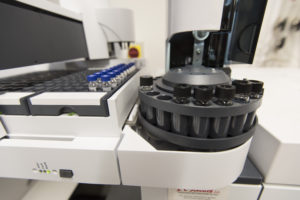
Gas chromatography-mass spectrometry analysis. (Photo: EPRG. BioArch-Department of Archaeology, University of York)
Research is proposing new hypotheses about such interesting aspects as the start of the processing of dairy products in Eurasia, the use of some spices in the preparation of food during prehistory and even the appearance of fermented beverages, such as mead.
Ongoing advances in science will reveal new insights into when different kinds of food appeared, how they were cooked during the history of humankind, and their impact on past societies. We are what we eat, and the evolution of human societies is clearly determined by food resources and their processing. In this way, the study of culinary practices during prehistory is today a fascinating new line of research.
By Dr Miriam Cubas, Marie Curie Researcher, BioArCh-Department of Archaeology, University of York. SRUK Yorkshire Constituency.
More info:
Early Pottery research group Facebook page
Author´s profiles:

